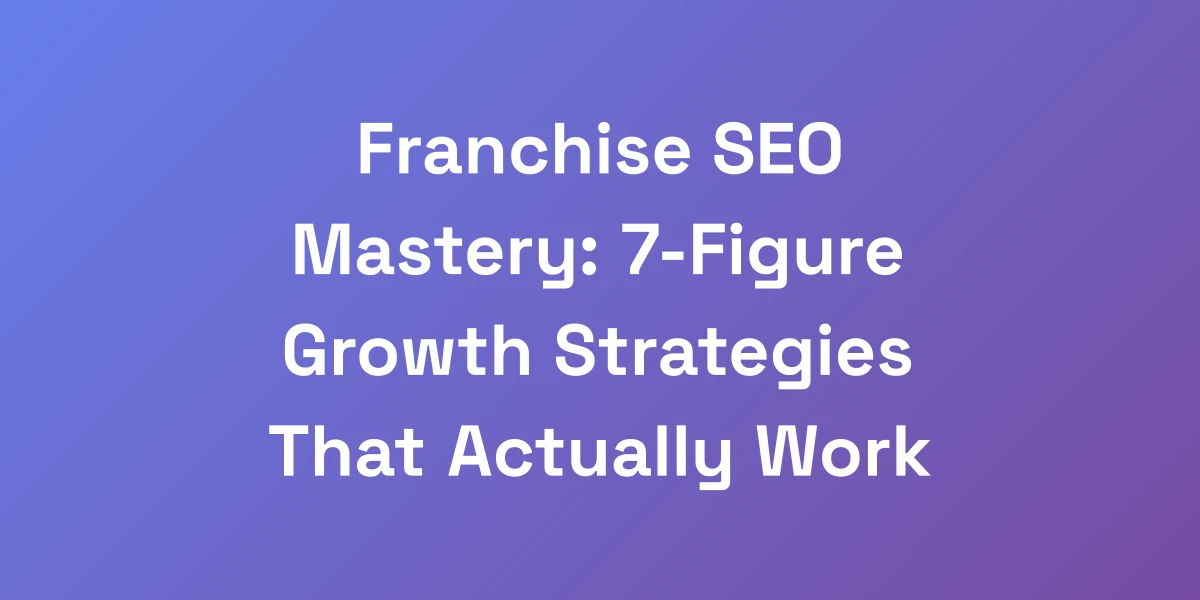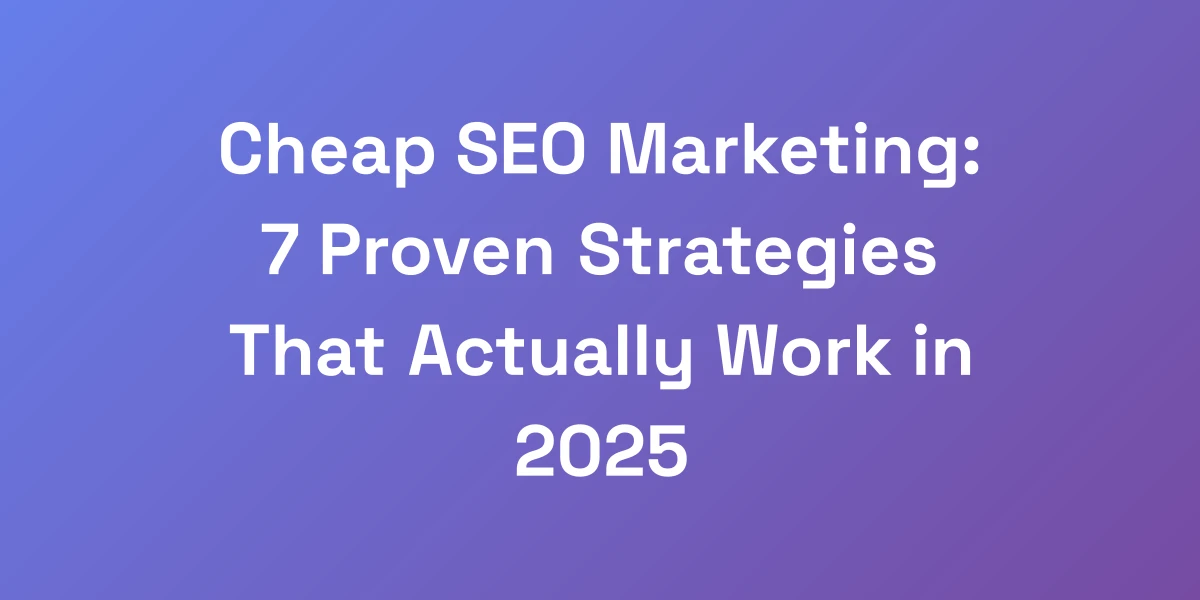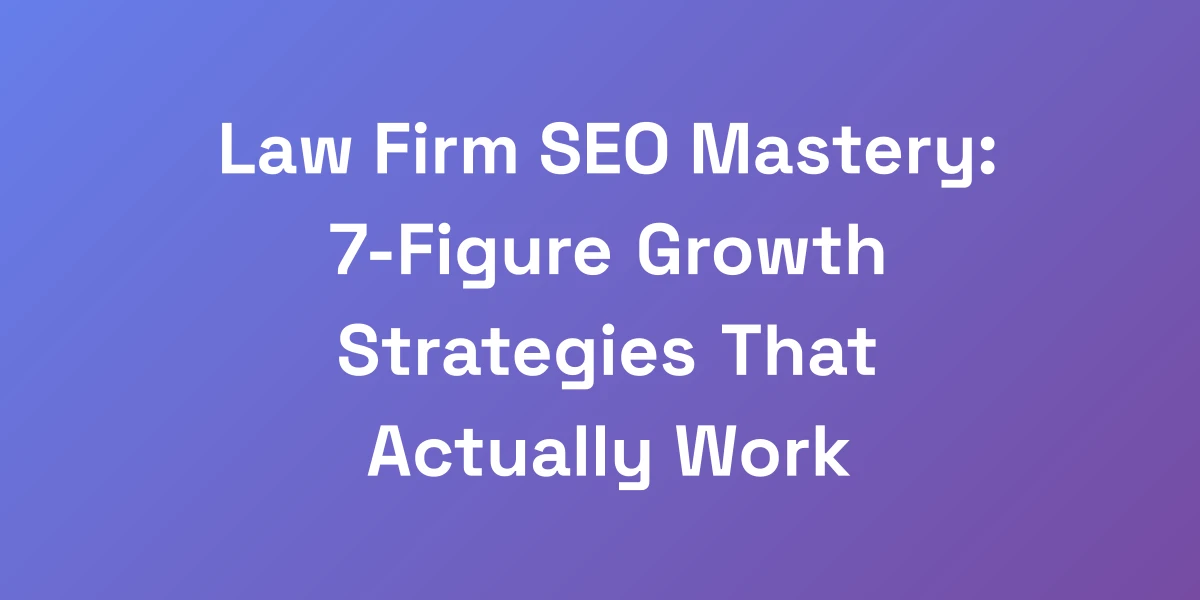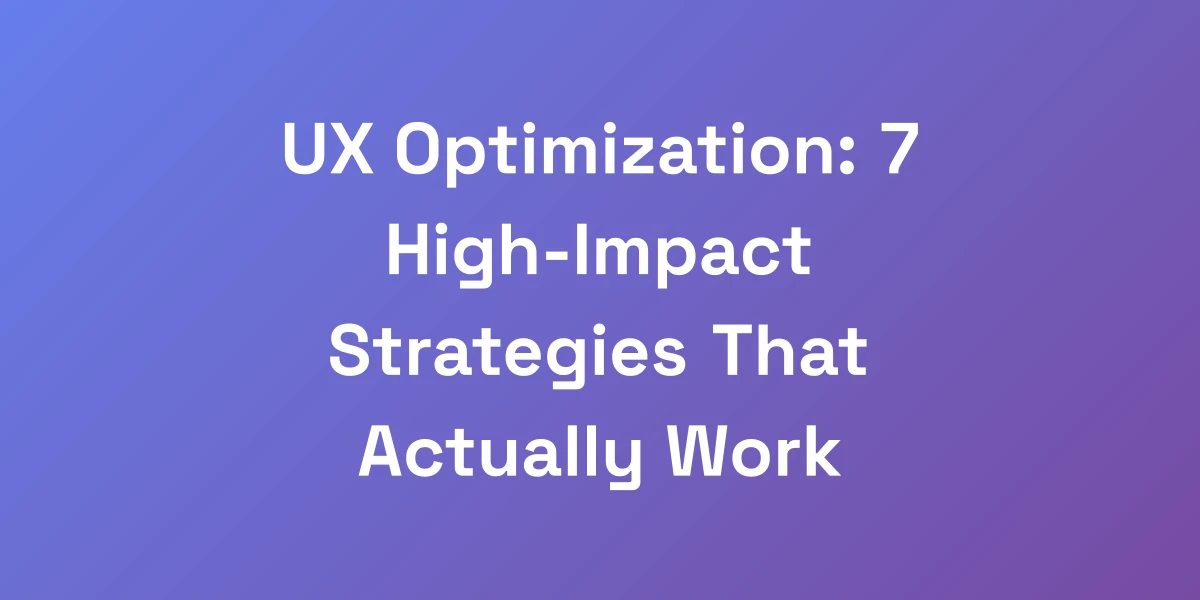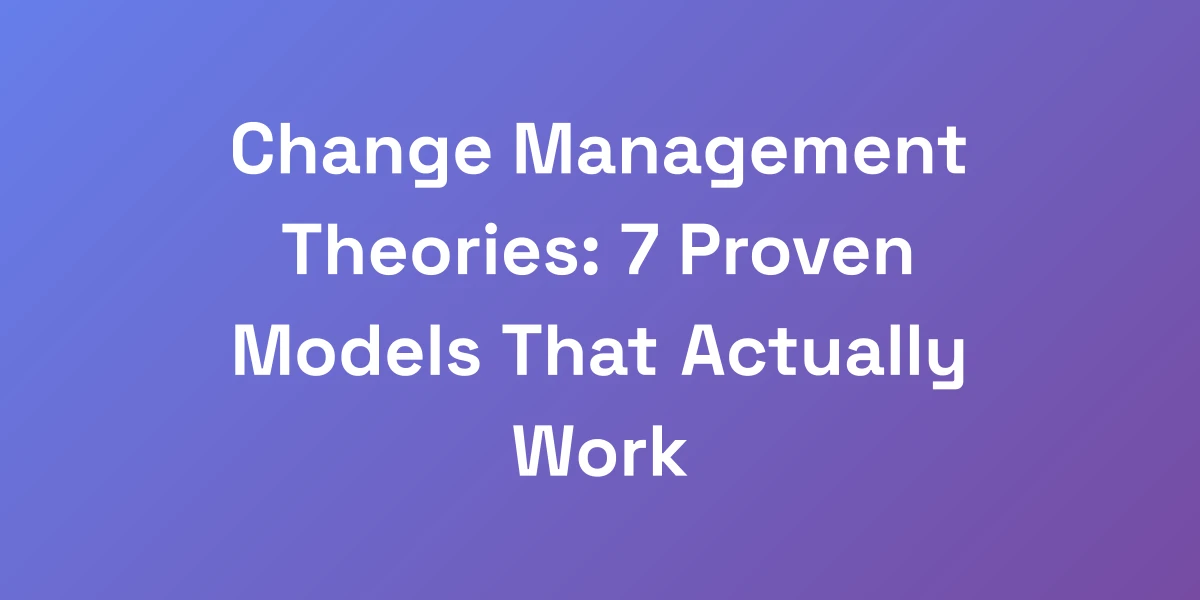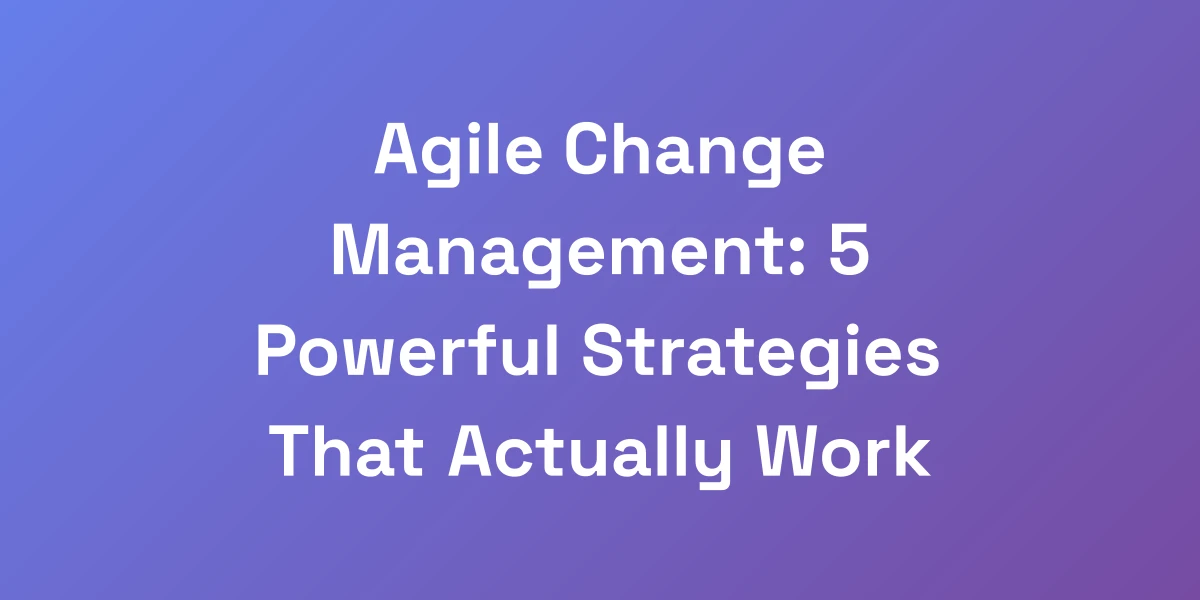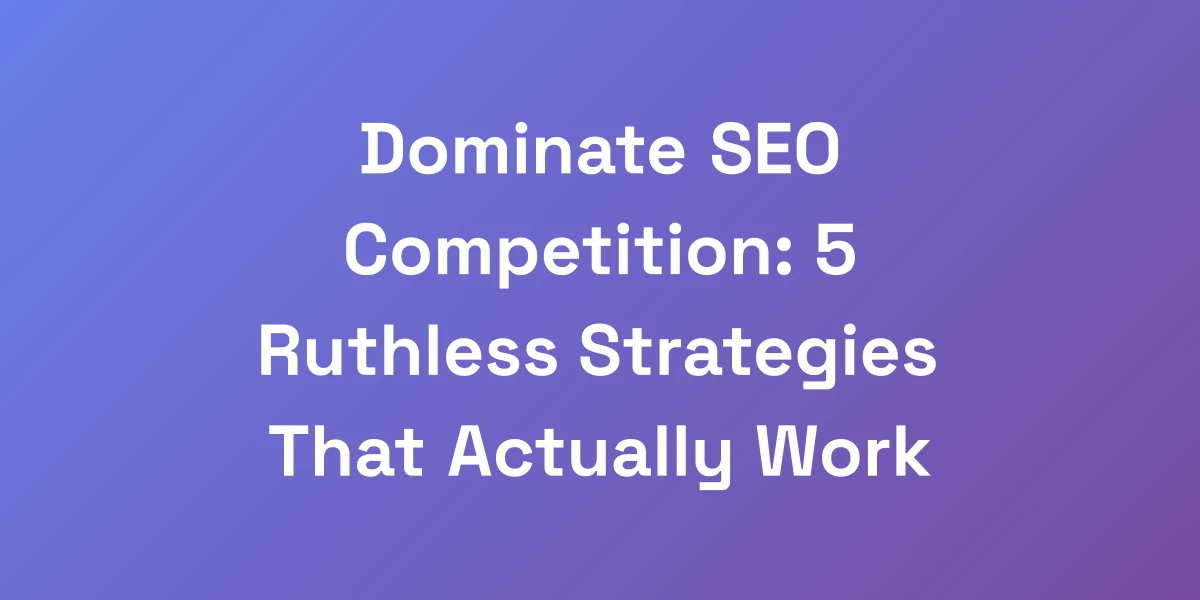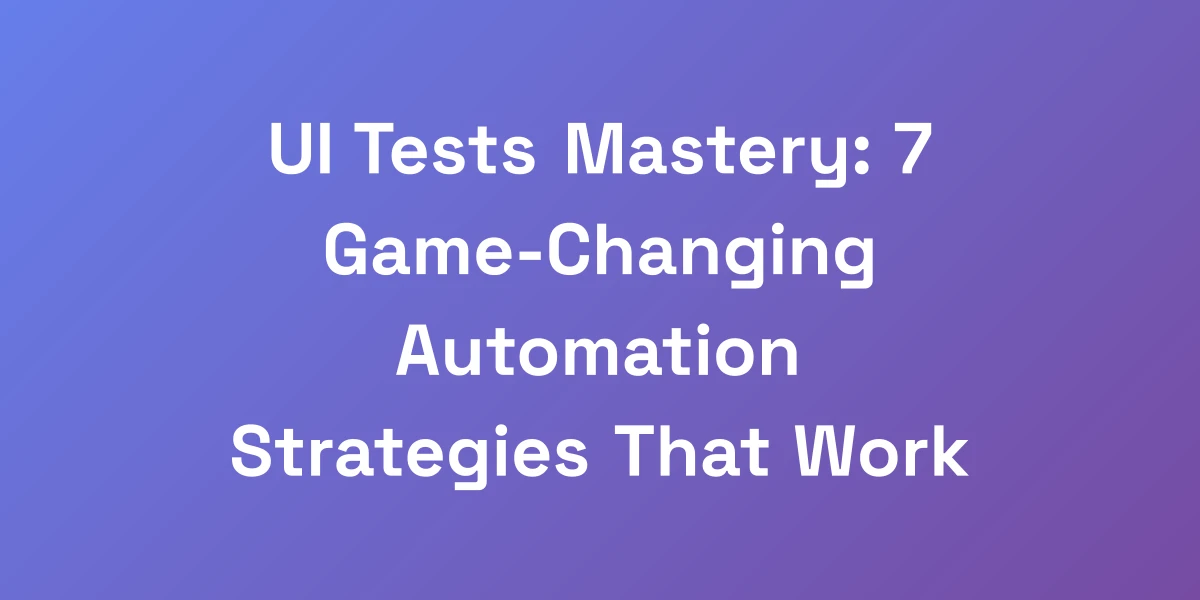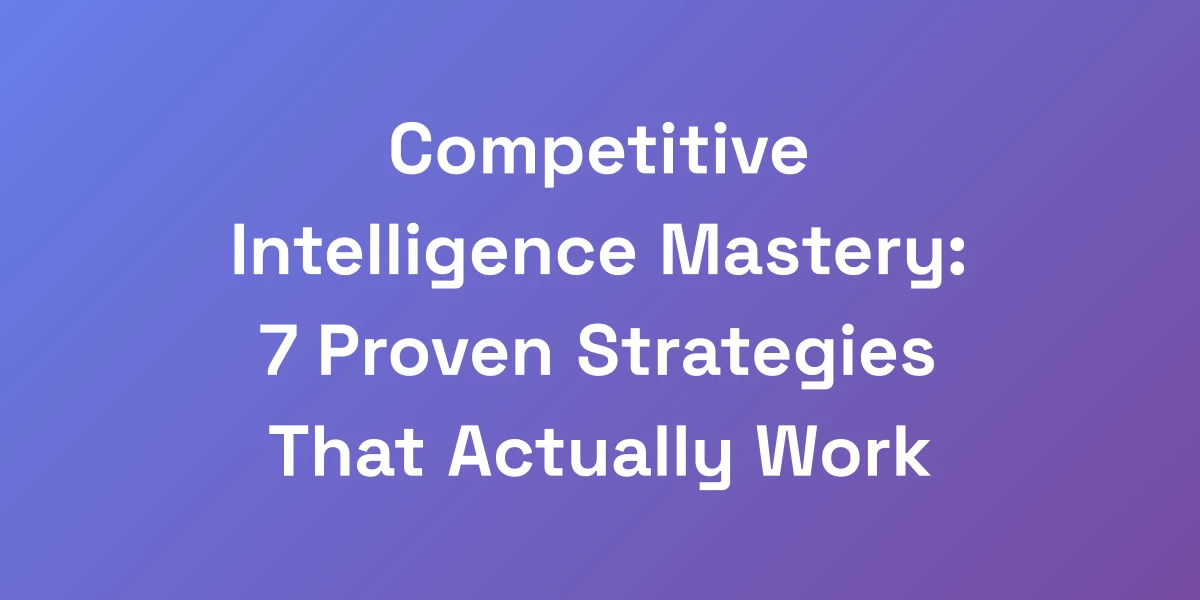
Competitive Intelligence Mastery: 7 Proven Strategies That Actually Work
Mar 18, 2025 | By [email protected]
Competitive intelligence isn’t just a buzzword tossed around in boardrooms—it’s the lifeblood of any thriving business. Yet, here’s a brutal truth: 90% of businesses are doing competitive intelligence completely wrong. They’re drowning in data that means nothing and missing out on actionable insights that could skyrocket their growth. Picture this: you’re navigating a vast ocean with a map that’s missing crucial landmarks. Frustrating, right? That’s what bad competitive intelligence feels like.
We’ve seen countless companies stumble because they relied on surface-level information, making decisions that don’t hit the mark. But it doesn’t have to be this way. Imagine having a crystal-clear view of your market, knowing exactly where your competitors stand, and using that knowledge to outmaneuver them at every turn. Intrigued? You should be.
In this comprehensive guide, we’re diving deep into the world of competitive intelligence. We’re not just scratching the surface—we’re uncovering seven proven strategies that actually work to give you a sustainable edge. If you’re tired of guessing and ready to make informed, revenue-driving decisions, keep reading. This is your blueprint to mastering competitive intelligence and dominating your market.
Why Most Businesses Fail at Competitive Intelligence (And How to Win)
Let me be brutally honest – 90% of businesses are doing competitive intelligence completely wrong. They’re wasting time collecting useless data and making decisions based on surface-level insights.
We’ve spent millions testing different approaches, and here’s the truth: effective competitive intelligence isn’t about gathering more information—it’s about gathering the right information and turning it into actionable advantage.
In this guide, we’ll show you exactly how to build a competitive intelligence system that actually drives revenue.
The Fatal Flaws in Traditional CI Approaches
Traditional competitive intelligence (CI) methods are stuck in the past. Most businesses rely on manual data collection, scattered spreadsheets, and fleeting insights. It’s like trying to win a marathon with ankle weights.
- Data Overload: Collecting vast amounts of data without a clear purpose leads to analysis paralysis.
- Lack of Integration: Siloed data sources prevent a holistic view of the competitive landscape.
- Reactive Strategies: Waiting to respond to competitors’ moves instead of anticipating them.
For example, a mid-sized tech company spent months compiling competitor product features, only to realize those features were irrelevant to customer needs. Wasted time and resources.
The Real Definition of Modern Competitive Intelligence
Modern competitive intelligence is about smart, strategic insights. It’s not just data collection; it’s a disciplined process of turning information into strategic action.
- Proactive Gathering: Seeking out information before competitors make their moves.
- Strategic Analysis: Focusing on data that directly impacts your business objectives.
- Actionable Insights: Translating intelligence into clear, executable strategies.
Think of it as having a playbook that not only shows where the competition is but also provides the next play to outmaneuver them.
Why Your Current CI Strategy Isn’t Making You Money
Your CI strategy might be thorough, but is it profitable? If not, you’re probably stuck in data collection without leveraging insights to drive revenue.
- Misaligned Objectives: CI efforts aren’t tied to business goals.
- Poor Communication: Insights aren’t effectively shared across departments.
- Slow Implementation: Delayed actions render insights obsolete.
Imagine discovering a new market trend, but it takes months to act on it. By the time you launch, competitors have already captured the opportunity.
The Minimum Effective Dose for CI Success
What’s the least you need to do to see results? The minimum effective dose is about focusing on high-impact activities that drive the most value.
- Identify Key Metrics: Focus on metrics that align with your strategic goals.
- Streamline Data Collection: Use tools that automate and integrate data sources.
- Prioritize Insights: Filter information to highlight what truly matters.
For instance, prioritize customer feedback and competitor pricing strategies over less impactful data. It’s about working smarter, not harder.
Setting Up Your CI Program for Maximum ROI
Maximizing ROI from your CI program starts with a solid foundation. Here’s how to set it up:
- Define Clear Objectives: Align CI goals with business objectives to ensure relevance.
- Invest in the Right Tools: Choose CI tools that offer automation and integration capabilities.
- Build a Skilled Team: Hire professionals who can analyze and interpret data effectively.
For example, integrating AI-powered tools like Meltwater or Crayon can automate data collection, freeing up your team to focus on analysis and strategy. Additionally, implementing SEO automation software can further streamline your competitive intelligence efforts.
The 7-Step Framework for Gathering Intelligence That Matters
After analyzing thousands of businesses, we’ve identified the exact framework that separates successful CI programs from failures. Here’s the reality—you don’t need fancy tools or a massive budget. You need a systematic approach to gathering intelligence that directly impacts your bottom line.
We’re going to show you the same framework we use to gather intelligence that has helped our portfolio companies crush their competition and scale rapidly.
Step 1: Identifying Your Critical Intelligence Needs
The first step is pinpointing what you need to know to drive your strategic decisions. This isn’t about collecting data for the sake of it; it’s about focusing on intelligence that aligns with your business goals.
- Define Business Objectives: What are your short-term and long-term goals?
- Identify Key Competitors: Who are the main players threatening your market position?
- Determine Essential Metrics: What data points will provide the most actionable insights?
For instance, a SaaS company might prioritize customer acquisition metrics and competitor pricing strategies to optimize their growth tactics.
Step 2: Mapping Your Competitive Landscape
Understanding your competitive landscape is crucial. It’s about knowing who your competitors are, their strengths, weaknesses, and strategies.
- Competitive Segmentation: Categorize competitors based on factors like market share, product offerings, and target audience.
- SWOT Analysis: Assess the strengths, weaknesses, opportunities, and threats related to each competitor.
- Market Positioning: Understand where each competitor stands in the market and identify gaps you can exploit.
By mapping out your competitive landscape, you can identify opportunities for differentiation and areas where you can outperform rivals.
Step 3: Setting Up Automated Intelligence Gathering
Automation is your best friend when it comes to efficient data collection. It ensures you’re consistently gathering the right information without manual effort.
- Choose the Right Tools: Platforms like Semrush, Brandwatch, and Similarweb are excellent for automated data collection.
- Integrate Data Sources: Ensure your CI tools can pull data from various sources, including social media, websites, and market reports.
- Set Up Alerts: Configure notifications for significant changes in competitors’ activities, such as new product launches or pricing adjustments.
Automation not only saves time but also keeps your intelligence up-to-date, allowing you to react swiftly to market changes.
Step 4: Creating Your Human Intelligence Network
While automation handles data collection, human intelligence brings depth and context to your insights. Building a reliable network is essential.
- Internal Expertise: Leverage the knowledge of your sales, marketing, and product teams to gather insights from customer interactions.
- External Contacts: Establish relationships with industry analysts, former employees, and other sources that can provide insider information.
- Collaborative Platforms: Use tools like Slack or Teams to facilitate information sharing among your network.
For example, your sales team might have firsthand knowledge of competitor shortcomings based on customer feedback, which is invaluable for your CI efforts. Incorporating expert quotes can further enhance the depth of your intelligence.
Step 5: Establishing Analysis Protocols
Collecting data is only half the battle. You need robust protocols to analyze the information and extract meaningful insights.
- Standardized Processes: Develop consistent methods for data analysis to ensure reliability and accuracy.
- Use Analytical Frameworks: Apply tools like SWOT analysis, Porter’s Five Forces, or PEST analysis to structure your insights.
- Prioritize Insights: Focus on data that has the most significant impact on your strategic objectives.
For instance, using Porter’s Five Forces can help you understand the competitive pressures in your industry, enabling you to develop strategies to mitigate threats and leverage opportunities.
Step 6: Building Action Triggers
Insights without action are worthless. Building action triggers ensures that intelligence directly translates into strategic moves.
- Define Trigger Points: Identify specific conditions or data points that will prompt action, such as a competitor’s price drop or a new product launch.
- Develop Response Strategies: Create predefined responses for different scenarios to ensure swift and effective action.
- Assign Responsibilities: Clearly define who is responsible for taking action when trigger points are met.
Imagine a scenario where a competitor lowers their prices. With action triggers in place, your marketing team can immediately launch a targeted campaign to highlight your superior value proposition, maintaining your competitive edge.
Step 7: Measuring Intelligence ROI
To ensure your CI program is delivering value, you must measure its ROI. This involves both tangible and intangible metrics.
- Tangible Metrics: These include win rates, average revenue per account, and cost savings from strategic decisions.
- Intangible Metrics: These involve increased confidence in decision-making, preparedness in responding to threats, and overall strategic alignment.
- Regular Reviews: Conduct periodic assessments of your CI program to evaluate its effectiveness and make necessary adjustments.
For example, if implementing a new CI strategy leads to a 10% increase in market share, that’s a clear, tangible ROI. Meanwhile, an intangible benefit could be the enhanced strategic thinking capabilities of your leadership team.
Advanced Competitive Intelligence Tactics for Market Domination
Here’s where we separate the players from the pretenders. Most businesses stop at basic competitor monitoring, but true market leaders go deeper.
We’re going to reveal the advanced CI tactics we’ve used to identify market opportunities months before our competitors. These are the same strategies that have helped us spot emerging trends and capitalize on them before anyone else even notices.
Predictive Intelligence Modeling
Predictive intelligence involves using data analytics and machine learning to forecast future market trends and competitor actions.
- Data Collection: Gather historical data on market trends, competitor behavior, and consumer preferences.
- Machine Learning Algorithms: Apply algorithms to identify patterns and predict future developments.
- Scenario Planning: Develop different scenarios based on predictive insights to prepare for various outcomes.
For example, predictive models can forecast a competitor’s next product launch based on their past release patterns and current market conditions. This allows you to prepare your own launch strategy in advance, ensuring you stay ahead of the curve.
Digital Footprint Analysis
Understanding your competitors’ digital footprint can provide deep insights into their online strategies and customer engagement tactics.
- Website Analytics: Analyze competitors’ website traffic, user behavior, and SEO strategies.
- Social Media Monitoring: Track engagement metrics, content strategies, and influencer partnerships.
- Content Analysis: Assess the type and quality of content competitors are producing and how it resonates with their audience.
For instance, by analyzing a competitor’s social media engagement, you can identify which types of posts are driving the most interaction and apply similar strategies to your own channels.
Competitive Technology Stack Mapping
Mapping out your competitors’ technology stacks provides visibility into the tools and platforms they use, giving you a strategic advantage.
- Identify Tools: Use tools like BuiltWith or SimilarTech to uncover the technologies your competitors are leveraging.
- Evaluate Effectiveness: Assess how these tools contribute to their operational efficiency and customer experience.
- Benchmarking: Compare their technology stack with yours to identify gaps and opportunities for improvement.
For example, if a competitor is using a sophisticated CRM system that enhances their customer engagement, you might consider adopting a similar system to bolster your own customer relationship management.
Strategic Pattern Recognition
Recognizing patterns in competitor behavior can uncover strategic insights that are not immediately obvious.
- Behavioral Analysis: Track and analyze competitors’ sales cycles, marketing campaigns, and product development timelines.
- Trend Identification: Spot recurring themes or strategies that indicate long-term plans.
- Strategic Adjustments: Use these patterns to anticipate competitor moves and adjust your strategies accordingly.
For instance, if a competitor consistently launches premium products just before key industry events, you can preemptively develop your own high-end offerings tailored to those events.
Market Sentiment Analysis
Understanding the market sentiment towards your brand and your competitors can guide your strategic decisions.
- Social Listening: Monitor social media platforms to gauge public opinion and customer satisfaction.
- Sentiment Scoring: Use AI tools to quantify sentiment and identify trends over time.
- Feedback Integration: Incorporate sentiment insights into your product development and marketing strategies.
For example, if sentiment analysis reveals that customers are frustrated with a competitor’s customer service, you can capitalize on this by highlighting your superior support in your marketing campaigns.
Opportunity Gap Identification
Identifying gaps in the market where competitors are underperforming allows you to seize opportunities for growth.
- Gap Analysis: Compare your offerings against competitors to identify underserved areas.
- Customer Needs Assessment: Understand unmet customer needs and preferences.
- Product Innovation: Develop products or services that fill these gaps, offering unique value to your customers.
For instance, if you discover that competitors are neglecting a particular feature customers want, you can innovate and offer that feature, distinguishing your product in the market.
Converting Intelligence into Revenue-Generating Actions
Intelligence without action is just expensive data. The key to turning your CI program into a profit center is knowing exactly how to convert insights into revenue-generating moves.
We’ll show you our exact process for turning competitive intelligence into tactical advantages that directly impact your bottom line. This isn’t theory—these are battle-tested strategies that have generated millions in revenue.
The Action-Intelligence Framework
Our framework ensures that every piece of intelligence collected is linked to a specific action.
- Insight Identification: Highlight key insights that can influence strategic decisions.
- Strategic Planning: Develop strategies based on these insights to exploit opportunities or mitigate threats.
- Execution: Implement the strategies swiftly and monitor their effectiveness.
For example, an insight about a competitor’s declining customer satisfaction can lead to a strategy to enhance your own customer service and attract their dissatisfied customers.
Creating Competitive Response Playbooks
Having predefined playbooks for various competitive scenarios ensures you’re always prepared to act.
- Scenario Planning: Develop playbooks for different competitive moves, such as price changes, new product launches, or marketing campaigns.
- Action Steps: Clearly outline the steps your team should take in each scenario.
- Responsibility Assignment: Assign roles and responsibilities to ensure swift execution.
For instance, if a competitor launches a new product, your playbook might include steps like analyzing the product, adjusting your marketing messages, and ramping up your sales efforts to counter the launch.
Rapid Market Adaptation Strategies
Markets change quickly, and your ability to adapt can set you apart from competitors.
- Agile Methodologies: Implement agile practices to enable quick responses to market changes.
- Continuous Monitoring: Keep a constant eye on market trends and competitor activities.
- Flexible Strategies: Develop strategies that can be easily adjusted based on new intelligence.
For example, by adopting agile project management, your team can pivot your product development focus based on real-time insights, ensuring you meet evolving customer demands faster than your competitors.
Competitive Advantage Amplification
Once you have a competitive advantage, it’s crucial to amplify it to maximize its impact.
- Enhanced Marketing: Highlight your competitive advantages in your marketing campaigns.
- Product Refinement: Continuously improve your products to strengthen your advantages.
- Customer Engagement: Engage with your customers to reinforce the value of your advantages.
For instance, if your superior technology is a key advantage, showcase it through detailed product demos, customer testimonials, and targeted advertising that emphasizes this strength.
Revenue Opportunity Identification
Identifying and capitalizing on revenue opportunities is the ultimate goal of competitive intelligence.
- Market Segmentation: Identify segments where your competitors are weak or absent.
- New Product Development: Develop products that meet the specific needs of these segments.
- Strategic Partnerships: Form alliances that can help you penetrate new markets or enhance your offerings.
For example, spotting a niche market underserved by competitors allows you to tailor a product specifically for that segment, driving revenue growth by tapping into a new customer base.
Risk Mitigation Protocols
Effective CI not only seeks opportunities but also identifies potential risks from competitive actions.
- Threat Assessment: Continuously assess potential threats from competitors.
- Contingency Planning: Develop plans to address identified threats proactively.
- Continuous Improvement: Regularly update your risk mitigation strategies based on new intelligence.
For instance, if a competitor is expanding into your region, a risk mitigation protocol might include strengthening your local partnerships or enhancing your marketing efforts to retain your market share.
Building Your Competitive Intelligence Tech Stack
Stop wasting money on overpriced CI tools that don’t deliver results. We’ll show you how to build a lean but powerful tech stack that automates 80% of your CI work while focusing on the metrics that actually matter. Additionally, consider utilizing content marketing SEO services to enhance your intelligence capabilities.
We’ve tested dozens of tools across our portfolio companies, and we’ll share exactly which ones deliver the highest ROI and how to use them effectively.
Essential CI Tools for Every Budget
Regardless of your budget, there are essential tools that can elevate your CI efforts.
- Data Collection: Tools like Semrush and SimilarWeb help gather competitor data efficiently.
- Social Listening: Platforms like Brandwatch allow you to monitor competitor social media activity.
- Automation: Crayon automates competitive tracking, saving time and resources.
For startups, leveraging affordable tools like SpyFu can provide substantial insights without breaking the bank. On the other hand, larger enterprises might benefit from comprehensive platforms like Meltwater that offer advanced analytics and integration capabilities. Additionally, exploring landing page SEO can help you stay informed about the latest advancements in CI technology.
Automation and Integration Strategies
Automation is key to scaling your CI efforts without exponentially increasing costs.
- Integrate Your Tools: Ensure your CI tools work seamlessly together to provide a unified data stream.
- Automate Routine Tasks: Use SEO automation software to handle data collection, monitoring, and initial analysis.
- API Utilization: Leverage APIs to connect different platforms, enhancing the flow of information.
For example, integrate your social listening tool with your CRM to automatically update customer insights based on competitive intelligence data, streamlining your workflow and enhancing data utilization.
Data Collection and Analysis Tools
Effective data collection and analysis tools are the backbone of any CI program.
- Data Scraping Tools: Use tools like Scrapy or Octoparse to gather data from various online sources.
- Analytics Platforms: Platforms such as Tableau or Power BI can help visualize and interpret your data.
- AI-Driven Analytics: Employ AI tools like IBM Watson to enhance data analysis and uncover deeper insights.
For instance, using Tableau to visualize competitor performance metrics can help you quickly identify trends and make informed strategic decisions.
Visualization and Reporting Platforms
Clear visualization and reporting are essential to communicate your insights effectively.
- Dashboards: Create interactive dashboards that provide real-time updates on key metrics.
- Automated Reports: Set up automated reporting to keep stakeholders informed without manual effort.
- Custom Visualizations: Use tools like Canva or Infogram to create compelling visual representations of your data.
Imagine presenting a monthly CI report with dynamic charts that update automatically, making it easier for your team to grasp complex data at a glance and act swiftly.
AI and Machine Learning Applications
AI and machine learning can supercharge your CI efforts, enabling deeper and faster insights.
- Predictive Analytics: Use AI to forecast market trends and competitor actions.
- Natural Language Processing: Employ NLP to analyze competitor communications and market sentiment.
- Machine Learning Models: Develop models that can identify patterns and anomalies in vast datasets.
For example, using machine learning to analyze customer reviews can highlight specific areas where a competitor is underperforming, allowing you to target those areas in your strategy.
Custom Tool Development Guidelines
Sometimes, off-the-shelf tools don’t cut it. Developing custom tools tailored to your specific needs can provide a significant advantage.
- Identify Unique Needs: Determine what specific functionalities your CI program requires that current tools lack.
- Develop In-House: If you have the resources, building a custom tool can ensure it fits perfectly with your workflow.
- Leverage APIs: Use APIs to extend the capabilities of existing tools, creating a customized CI solution without starting from scratch.
For instance, a custom dashboard that integrates data from multiple sources and provides real-time alerts on specific competitor activities can offer a more streamlined and powerful solution than using several disparate tools.
